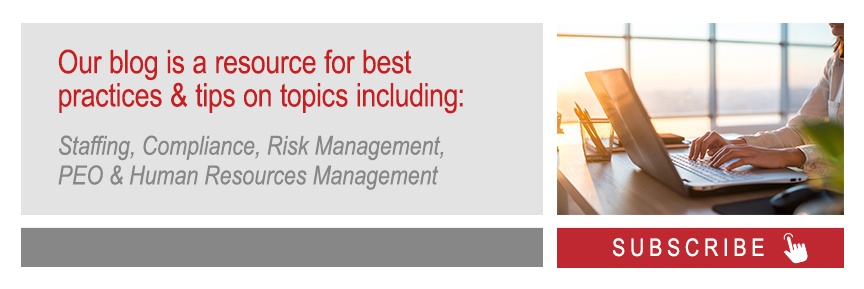
Managers have utilized one-on-one meetings to develop relationships with their staff and provide a better communication channel. The changes caused by the pandemic have demonstrated the value of one-on-ones, making them an effective supplement to or replacement of periodic performance reviews.
One-on-ones are meetings where a supervisor or manager spends time with a specific employee, in private, to discuss issues, provide feedback, give praise, or have a conversation. Because they are private, they offer opportunities for two-way feedback that might be too awkward in a group setting. Frequent meetings also let you address issues before they become real problems. Good supervisors know the value of one-on-ones and how to use them effectively.
Here are some ways to make sure your one-on-one meetings are constructive.
Meet in a Confidential Space
Employees need to know that they can express their concerns freely, which means meeting in a private space, real or virtual. If conducting one-on-ones online, use a password-protected video conference to ensure nobody else can sneak in (except perhaps somebody's cat). If in-person, it's essential to ensure privacy by having meetings in private rooms where it's unlikely someone can barge in unannounced.
Also, consider the tone your meeting space can convey since you want to make the meeting comfortable for your staff. You may want to avoid meeting in your office, as it may be intimidating, at least at first. Employees may find it too "official," which could change their willingness to speak with you. Consider meeting in the employee's office instead, or in a small conference room if they have a cubicle.
If you have nervous employees, take them out for lunch or coffee, which can help break the ice and cause both of you to relax. It's essential to know your employees and how to make them comfortable. Some might prefer to meet in your office, while others would be most comfortable discussing their issues during a walking meeting in the park. The circumstances depend on your office setup.
Hold Meetings Regularly
How often you hold meetings will vary, but you should hold them or schedule them regularly. Employees benefit from knowing they have upcoming opportunities to speak with you. At the same time, you don't want them to feel crowded or micromanaged. Choose a schedule that suits both of you, whether weekly, bi-weekly, or monthly. Newer employees may need a little more hand-holding, and you might consider a shorter schedule to support them while they get up to speed.
Regular scheduling also helps empower employees. They know when they can get their questions answered and ask for proper feedback, making them less likely to come to you for smaller matters and instead will handle it themselves. They are also less likely to fill your inbox with queries.
Even outside of meetings, you want to maintain regular communication with your employees to uphold an open-door policy where they feel they can talk to you. Whether you stop by to simply say hi or give a brief update on one of their projects. Furthermore, occasionally asking for their opinion or take on certain matters helps them feel heard and that their perspective positively impacts the organization. Employees will feel better knowing that their boss values their input, and it makes them feel more open to expressing their opinion about important organizational decisions.
Keep Meetings at a Proper Length of Time
Consider the length of the meeting carefully to prevent employees from feeling overwhelmed by their overall number of meetings. You need to allow just enough time to discuss all issues properly before going back to work. It's counterproductive to haul somebody in for a two-hour one-on-one (except in rare circumstances where you might need the time, such as launching a project).
Typically, one-on-ones should last between 15 and 60 minutes, depending on role complexity and how much you need to discuss. There might even be some variation in length with either the supervisor or the employee asking for more time. Don't be afraid to break it up early if you have covered everything faster than expected.
Manage the Tone of the Meeting
While there should be no doubt about who is in charge, it's also essential to keep a balance. One-on-ones should be casual enough to encourage honest feedback, legitimate concerns, and necessary questions. One issue with traditional performance reviews is that they are top-down. You should not be afraid to let employees review you.
The best balance is to be open enough to share some personal stories while establishing your leadership position by providing professional insight. Employees are more likely to feel supported when they can provide feedback, which helps avoid burnout and increase engagement. You are also more likely to find out about occurrences in the office when you are not looking. By no means should you be too friendly, letting a casual relationship undermine your authority. It only means you need to be open enough to make sure you and they are comfortable.
Reach Clear Conclusions
The ultimate purpose of one-on-ones is to provide helpful, constructive feedback. They are not to criticize or belittle, but to give employees the clear guidance they need to do their jobs and develop good habits. Because of this, it's crucial that the meeting be clear and focused.
Consider setting goals for employees to achieve before the next meeting. Ensure that these goals are clear, attainable, and reasonable for the time between meetings. Goals should not overwhelm employees but rather motivate them. Sometimes sharing your own goals can help encourage employees to fulfill theirs and keep them feeling like you are not asking anything unreasonable.
Always end one-on-ones on as positive a note as you can. End with praise or talk of recent success. Employees should not feel as if one-on-ones are only a way to check up on them or discipline them. Instead, make it clear that these meetings also help them succeed and thrive, which ultimately supports your business.
Encourage Open Communication with One-on-One Meetings
One-on-one meetings are essential. They help support your staff, deal with issues quickly, and keep your team coherent. Make sure to meet in a private space that suits both you and the employee, meet regularly and for the proper length of time, and keep everything clear.
One-on-ones are not meetings for the sake of meetings but part of a strategy that improves performance and engagement and supports good relationships between managers and employees.

